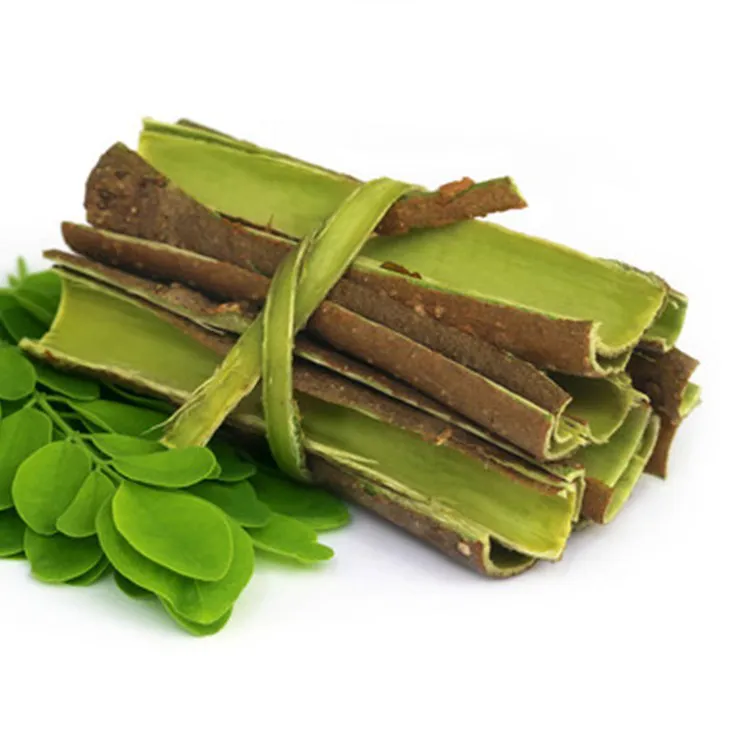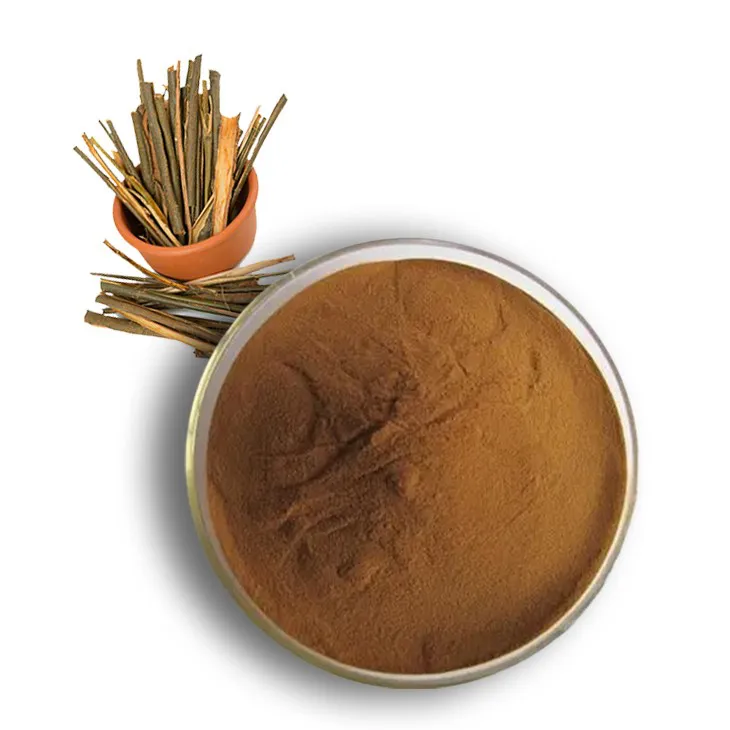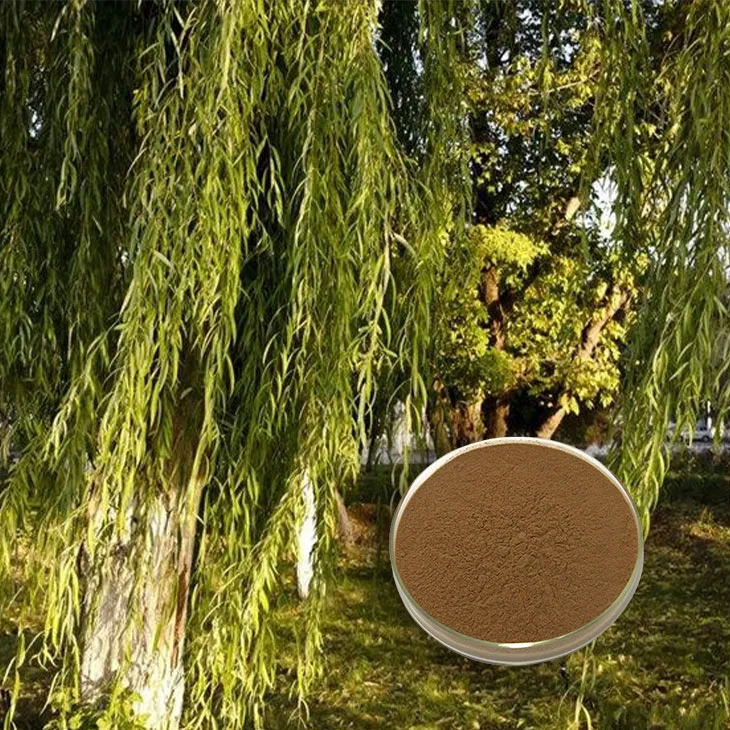- 0086-571-85302990
- sales@greenskybio.com
The process of extracting salicin from white willow bark extract.
2024-11-30

1. Introduction
Salicin is an important natural compound that can be found in White Willow Bark Extract. The extraction process of salicin is of great significance as it has potential applications in various fields such as medicine and cosmetics. Understanding the process of extracting salicin from White Willow Bark Extract is crucial for its effective utilization.

2. Source of White Willow Bark
The reliability of the source of white willow bark is the first and foremost consideration. It is essential to ensure that the white willow bark is obtained from a sustainable and uncontaminated source. This may involve sourcing from well - managed forests or reliable suppliers who follow ethical and environmental standards.

3. Preparation of White Willow Bark
3.1 Grinding
Once the white willow bark is obtained, the next step is to prepare it for extraction. Grinding the bark into a fine powder is a common practice. By reducing the bark to a fine powder, the surface area available for extraction is significantly increased. This allows for more efficient interaction between the bark and the extraction solvent, ultimately leading to a higher yield of salicin. The grinding process should be carried out carefully to ensure a consistent particle size, which can be achieved using appropriate grinding equipment such as a mortar and pestle or a mechanical grinder.

4. Solvent Extraction
4.1 Selection of Solvent System
The choice of solvent system is a critical factor in the extraction of salicin. A suitable solvent system needs to be selected based on the solubility properties of salicin. In many cases, a mixture of water and organic solvents is used. For example, a combination of water and ethanol can be an effective solvent system. The water helps in solubilizing polar components of the bark, while the ethanol is effective in extracting non - polar substances including salicin. Other organic solvents such as methanol or acetone may also be considered depending on the specific requirements of the extraction process. The ratio of the water and organic solvent in the mixture can be adjusted according to the nature of the white willow bark and the desired extraction efficiency.
4.2 Extraction Procedure
After selecting the solvent system, the extraction process is carried out. The ground white willow bark powder is mixed with the solvent system. This mixture is then stirred or shaken for an appropriate period. The stirring or shaking action helps in maximizing the contact between the solvent and the salicin present in the bark. The duration of this process can vary depending on factors such as the amount of bark, the volume of the solvent, and the efficiency of the mixing equipment. Generally, a period ranging from a few hours to several days may be required. During this time, the salicin gradually dissolves into the solvent, separating from other components of the bark.

5. Separation of the Liquid Phase
5.1 Centrifugation
Once the extraction is complete, the next step is to separate the liquid phase containing salicin from the solid residue. Centrifugation is a commonly used technique for this purpose. In a centrifuge, the extraction mixture is spun at a high speed. This causes the denser solid particles to sediment at the bottom of the centrifuge tube, while the liquid phase containing salicin remains on top. The liquid phase can then be carefully decanted or aspirated for further processing. Centrifugation is an efficient method for quickly and effectively separating the two phases, reducing the time required for the overall extraction process.
6. Purification of Salicin
6.1 Recrystallization
After separating the liquid phase, further purification of salicin is necessary to obtain a high - purity product. Recrystallization is a widely used technique for this purpose. The liquid containing salicin is typically concentrated by evaporation or other means to obtain a saturated solution. Then, the solution is cooled slowly. As the temperature decreases, salicin begins to crystallize out of the solution. The impurities, which are generally more soluble in the solvent at lower temperatures, remain in the solution. The crystallized salicin can be collected by filtration and washed with a small amount of cold solvent to remove any remaining impurities. Recrystallization can be repeated multiple times if a higher purity of salicin is desired.
7. Quality Control
7.1 Monitoring Purity
Throughout the extraction and purification process, quality control measures are essential to ensure the quality of the salicin obtained. Monitoring the purity of salicin is a crucial aspect of quality control. Various analytical techniques can be used for this purpose. For example, high - performance liquid chromatography (HPLC) can be used to accurately determine the purity of salicin. HPLC separates the components of a sample based on their different affinities for a stationary phase and a mobile phase. By comparing the peak area of salicin with that of other components in the chromatogram, the purity of salicin can be determined. Other techniques such as thin - layer chromatography (TLC) can also be used for a quick and preliminary assessment of purity.
7.2 Yield Monitoring
In addition to purity, monitoring the yield of salicin is also important. The yield can be calculated by comparing the amount of salicin obtained at the end of the process with the amount of salicin theoretically present in the original white willow bark. This helps in evaluating the efficiency of the extraction and purification process. A low yield may indicate problems in the extraction process such as incomplete extraction, loss during separation or purification steps. By closely monitoring the yield, appropriate adjustments can be made to the process to improve efficiency.
8. Conclusion
The extraction of salicin from White Willow Bark Extract is a multi - step process that involves careful selection of raw materials, appropriate extraction and separation techniques, and thorough purification and quality control. Each step plays a crucial role in obtaining high - quality salicin. With the increasing demand for natural products in various industries, the development and optimization of the salicin extraction process will continue to be an area of active research.
FAQ:
What is the first step in extracting salicin from white willow bark extract?
The first step is to ensure the white willow bark source is reliable.
Why is the white willow bark ground into a fine powder?
It is ground into a fine powder to increase the surface area for extraction.
What is a common solvent system used for the extraction?
A mixture of water and organic solvents might be used as a common solvent system.
How can the liquid phase containing salicin be separated from the solid residue?
Centrifugation can be used to separate the liquid phase containing salicin from the solid residue.
What is the purpose of recrystallization in the extraction process?
The purpose of recrystallization is to eliminate remaining impurities and obtain high - purity salicin.
Related literature
- Salicin: Isolation from White Willow Bark and Its Pharmacological Properties"
- "The Chemistry of Salicin Extraction from Natural Sources"
- ▶ Hesperidin
- ▶ Citrus Bioflavonoids
- ▶ Plant Extract
- ▶ lycopene
- ▶ Diosmin
- ▶ Grape seed extract
- ▶ Sea buckthorn Juice Powder
- ▶ Fruit Juice Powder
- ▶ Hops Extract
- ▶ Artichoke Extract
- ▶ Mushroom extract
- ▶ Astaxanthin
- ▶ Green Tea Extract
- ▶ Curcumin
- ▶ Horse Chestnut Extract
- ▶ Other Product
- ▶ Boswellia Serrata Extract
- ▶ Resveratrol
- ▶ Marigold Extract
- ▶ Grape Leaf Extract
- ▶ New Product
- ▶ Aminolevulinic acid
- ▶ Cranberry Extract
- ▶ Red Yeast Rice
- ▶ Red Wine Extract
-
Pomegranate Extract
2024-11-30
-
Lavender Extract
2024-11-30
-
Black Rice Extract
2024-11-30
-
Saw Palmetto Extract
2024-11-30
-
Red Vine Extract
2024-11-30
-
Licorice Root Extract Powder
2024-11-30
-
Motherwort Extract
2024-11-30
-
Acerola Juice Powder
2024-11-30
-
Green Tea Extract
2024-11-30
-
Uridine-5'-monophosphate Disodium salt
2024-11-30





















